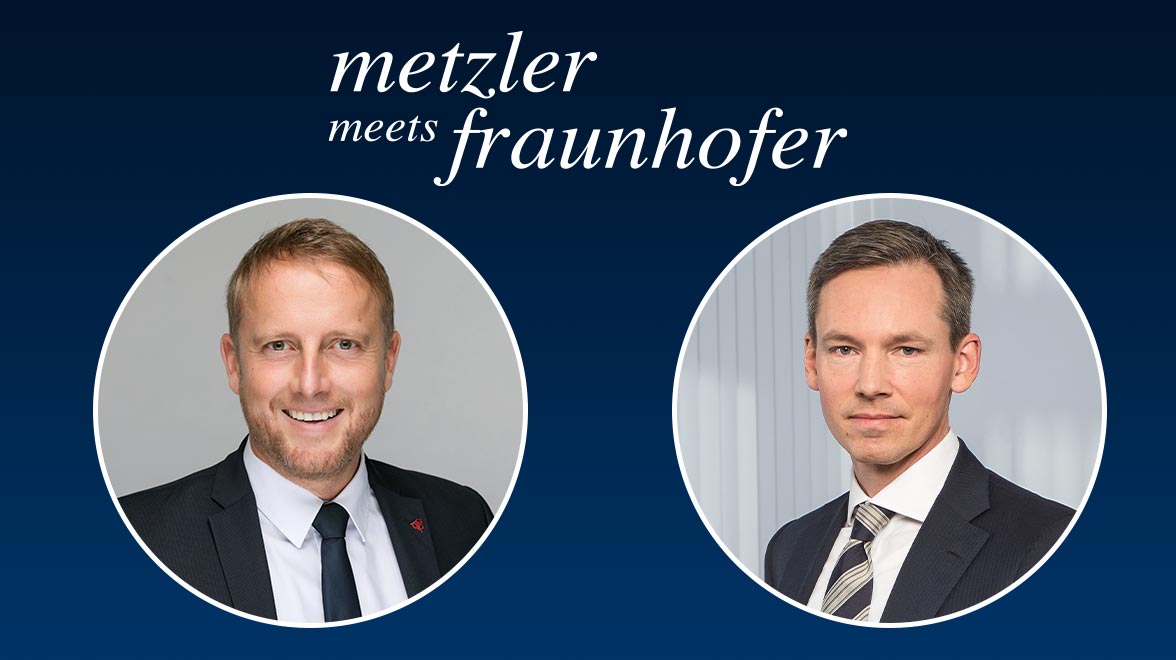Base scenario 2025: revival of the global economy
Caught between dollar dominance and opportunities for Europe
2025 will be characterized by geopolitical upheavals and economic challenges. Donald Trump's return to the White House on January 20, 2025 points to an economic policy agenda that will create both risks and new options for the global economy. The US dollar, the dominant instrument of the global financial order, will become a central element in this. However, there are opportunities for Europe and Germany. The key questions here are whether reforms can be introduced and whether a new economic dynamic can be initiated. Germany, with an economy characterized by stagnation in recent years, has the opportunity to become the locomotive of a European upturn with targeted reforms and structural changes. Particularly medium-sized companies that are represented in the MDAX will offer underestimated opportunities for investors.
US dollar: Trump caught between geopolitical power and economic weakness
The dual role of the US dollar as the world's reserve currency and as determinant of trade competitivness represents an economic policy dilemma for Donald Trump. On the one hand, a strong US dollar ensures political dominance for the USA, as around 60 percent of global trade and 70 percent of all foreign currency debt is denominated in US dollars. This guarantees the United States a structural advantage on the global financial markets. It also strengthens the US financial system, without which global trade cannot be financed – neither the trade transactions nor the necessary debt.
On the other hand, it is precisely this US dollar strength that is weighing on the competitiveness of US industry. Real, inflation-adjusted exchange rate data shows that the US dollar is now as strong as it was in 1985 when the Plaza Accord became necessary for targeted devaluation. Due to the strength of the US dollar, US industrial production has stagnated since 2005 while global industrial production has risen by over 50 percent in this period.
Sources: Refinitiv Datastream, Metzler; as of October 31, 2024
Trump's attempt to reduce the US trade deficit through unilateral tariffs already failed during his first term in office. Although the US increased tariffs on Chinese imports by almost 18 percentage points, the Chinese renminbi depreciated sharply in return, causing the competitive advantage to evaporate. A tariff increase acts like a devaluation of the US dollar, as it makes imports more expensive. However, if the US dollar appreciates on the foreign exchange market at the same time, the two effects almost completely cancel each other out. In addition, Chinese manufacturers are relocating their production to third countries like Vietnam and Mexico. Trump's response to this seems clear: expansion of tariffs on all US imports and the threat of punitive tariffs against the European Union. Since Donald Trump's election, the US dollar has already appreciated on the currency markets, meaning the effect of unilateral tariff increases is likely to fizzle out completely.
If Trump attempts to raise tariffs and weaken the US dollar at the same time so that US industry actually becomes more competitive, inflation could accelerate significantly, thus causing great dissatisfaction among the US population. A weaker US dollar could only be achieved with the help of an "overly" loose monetary policy by the US Federal Reserve. Trump would have to exert influence on the Fed to achieve this. However, he would probably not be able to do this until spring 2026 when he appoints a new Federal Reserve Chairman.
One instrument for Trump to specifically weaken the US dollar could be a "Mar-a-Lago Accord", named after Trump's estate in Florida. In essence, this would be a multilateral agreement between the USA, Europe and China. China would promise to revalue the renminbi in a controlled manner and boost its domestic consumption. Europe would pledge to drastically increase its defense spending, import more energy from the USA and stimulate growth through targeted fiscal policy. In return, the USA would refrain from increasing tariffs in full or in part. This would create the ideal combination for the USA; a weaker US dollar would strengthen the competitiveness of US industry without disempowering the Fed or massively stoking inflation.
A new "Mar-a-Lago Accord" to weaken the US dollar?
USA
No or only moderate increase in tariffs
China
Currency appreciation plus major domestic consumption stimulus
Europe
Increase in military spending, more energy imports, from the USA and fiscal stimulus
Europe must act strategically in this context. Escalating the trade conflict via counter-tariffs would be counterproductive. Although a stronger euro would have a negative impact on European exports, the recovery of the global economy and global trade as a result of a weaker US dollar should more than offset the negative exchange rate effects. On balance, German exports should therefore also benefit. The US dollar exchange rate also has a significant impact on financing conditions in the emerging markets. A strong US dollar means very restrictive financing conditions because hardly any US dollar foreign currency loans are granted. A weaker US dollar, on the other hand, would provide very positive impetus for the emerging markets and global trade because more US dollar loans would then flow into the emerging markets again. In our opinion, the extremely high valuation of the US dollar suggests that there will be political efforts to devalue it in 2025.
Sources: Refinitiv Datastream, Metzler; as of December 31, 2024
Europe: investments and reforms as a way out of the crisis
Europe is facing an economic turning point. The growth problems of recent years are the result of structural weaknesses, political uncertainty and the lack of strong leadership from core countries like Germany and France. However, a look at economic fundamentals reveals a differentiated picture. The Economist recently analyzed the best economies in 2024 and came to a surprising conclusion: seven of the ten most successful OECD countries are European while the USA ranks only 20th. Germany was ranked 23rd – so it still has a lot of catch-up potential.
This is encouraging for Germany. Although the German economy has stagnated, the labor market has remained surprisingly stable so far, inflation is low and national debt is low compared to other economies. In addition, German industry operates largely independently of the domestic economy through its global networks: 81.3% of the turnover of DAX-listed companies and 68.3% of MDAX turnover is generated abroad.
If Germany musters the courage for structural reforms after the new elections in February 2025, it could become the driving force behind a European recovery.
- Fiscal stimulus: a targeted investment program in infrastructure, digitization and defense.
- Administrative reform: more efficient planning and approval procedures to speed up investments.Tax relief: reduction of corporate taxes to strengthen competitiveness.
- Europe as a whole could benefit from a combination of targeted investments and reforms. Southern countries like Spain and Greece in particular are already demonstrating that courageous reforms can create growth and stability.
Risks: complex and numerous
- Geopolitics: The conflict between Iran and Israel has not yet been resolved. It could escalate again at any time and have a major impact on the oil market. In addition, tensions between China and Taiwan have recently increased again and could escalate further. US President-elect Donald Trump appears to want to make serious efforts to end the war in Ukraine.
- Europe: There are considerable risks of cohesion breaking down in the EU. On the one hand, political currents that are very nationalistic are gaining in importance. On the other hand, many countries are politically unable to curb government deficits and stabilize national debt.
- Interest rates: There is a risk that past key interest rate hikes by the European Central Bank (ECB) and the US Federal Reserve will lead to a wave of bankruptcies among highly indebted companies after a longer delay. Many companies that financed themselves at favorable interest rates will now have to refinance themselves at higher interest rates in 2025.
Growth and inflation prospects: base scenario points to upswing
Despite the risks, we expect an upturn in the global economy in our base scenario. There is a good chance of continued robust growth in the US due to the AI boom. In Europe, we see good opportunities for an upturn after a long dry spell – thanks to the ECB's key interest rate cuts and a fresh political start in Germany. We also expect a notable upturn in growth in China thanks to major government stimulus measures. Over the course of the year, a weaker US dollar should stimulate growth in emerging markets and global trade.
According to our forecast, inflation will decline in the euro zone and the USA. In the euro zone, it could even fall below 2.0%, while we expect only a slight decline in inflation in the USA due to high growth momentum.
| Eurozone | USA | China | Worldwide | |||||||||
| 2024 | 25e | 26e | 2024 | 25e | 26e | 2024 | 25e | 26e | 2024 | 25e | 26e | |
| Real GDP | 0.8 | 1.5 | 1.5 | 2.7 | 2.4 | 2.3 | 4.8 | 5.1 | 5.1 | 3.2 | 3.5 | 3.5 |
| Inflation | 2.4 | 1.9 | 2.2 | 2.9 | 2.5 | 2.8 | 0.4 | 0.5 | 1.0 | 5.8 | 4.2 | 4.5 |
- Global upturn in growth
- Upswing in Europe possible in 2025
- Significant decline in inflation in 2025
- Fewer key interest rate cuts by the ECB in 2025 than expected
Source: Metzler; as of December 31, 2024
Central banks and government bonds: fewer interest rate cuts than expected
Solid economic growth in the USA coupled with stubbornly high inflation means that we no longer expect the US Federal Reserve to cut interest rates this year. The economic situation in the euro zone is significantly worse so far this year, which is why we expect three interest rate cuts in January, March and April.
| Q3 2024 | Q4 2024 | Q1 2025 | Q2 2025 | Q3 2025 | Q4 2025 | |
|---|---|---|---|---|---|---|
| Deposit rate | 3.50 | 3.00 | 2.50 | 2.25 | 2.25 | 2.25 |
| Federal Funds Rate | 4.85 | 4.35 | 4.35 | 4.35 | 4.35 | 4.35 |
| GB Base Rate | 5.25 | 4.75 | 4.50 | 4.00 | 4.00 | 4.00 |
| Japan Call Rate | 0.25 | 0.50 | 0.75 | 1.50 | 1.00 | 1.00 |
Source: Metzler; as of December 31, 2024
Sources: Refinitiv Datastream, Bloomberg, Metzler, December 30, 2024
Sources: Refinitiv Datastream, Bloomberg, Metzler, December 30, 2024
However, the financial markets are still pricing in around two key interest rate cuts in the USA and four key interest rate cuts in the euro zone. As we expect fewer interest rate cuts than have been priced in, we therefore see no scope for yields on 10-year government bonds to fall. We expect the yield on a 10-year government bond in the USA to be 4.5% at the end of 2025 and 2.5% in Germany.
Equities: opportunities in the MDAX and SMEs
In principle, the US equity market is very highly valued, which dampens price opportunities. International stock markets outside the USA, on the other hand, are more or less fairly valued and offer more opportunities. The weak point of the US equity market is the extremely high weighting of a few US technology stocks. Should these stocks no longer perform well, this would weigh on the US equity market as a whole. At the same time, however, a good economy should ensure growth in corporate profits and create a fundamentally positive equity market environment worldwide.
The German equity market reflects the subdued mood with regard to Europe, but it is precisely here that attractive opportunities arise. The divergence between the DAX and MDAX has reached extreme proportions in recent years. While the DAX gained almost 50% between the beginning of 2021 and the end of 2024, the MDAX lost almost 15%. This development was mainly due to concerns about rising interest rates and refinancing costs for SMEs.
However, the MDAX has better growth prospects than the DAX
- Analysts are forecasting profit growth of 22.5% for MDAX companies over the next twelve months.
- The valuation of the MDAX is significantly below the historical average.
- SMEs are internationally oriented and benefit disproportionately from global economic recovery.
- In addition, experience shows that the MDAX tends to outperform the DAX around six to nine months after the first ECB interest rate cut. As the ECB cut interest rates for the first time in June 2024, the MDAX should start to catch up in the next few months.
Conclusion: turning point for investors
2025 offers a mixture of risks and opportunities. Trump's return, the associated question of the role of the US dollar and the geopolitical upheavals create uncertainty in the short term but offer long-term potential. It is not yet possible to predict which economic policy path US President-elect Donald Trump will take. Overall, we consider the economic environment to be good. Europe and Germany have the opportunity to achieve new growth through reforms and targeted stimuli.
More articles
This document published by Metzler Asset Management GmbH [together with its affiliated companies as defined in section 15 et seq. of the German Public Limited Companies Act (Aktiengesetz – "AktG”), jointly referred to hereinafter as “Metzler“] contains information obtained from public sources which Metzler deems to be reliable. However, Metzler cannot guarantee the accuracy or completeness of such information. Metzler reserves the right to make changes to the opinions, projections, estimates and forecasts given in this document without notice and shall have no obligation to update this document or inform the recipient in any other way if any of the statements contained herein should be altered or prove incorrect, incomplete or misleading.
Neither this document nor any part thereof may be copied, reproduced or distributed without Metzler‘s prior written consent. By accepting this document, the recipient declares his/her agreement with the above conditions.
 Deutsch
Deutsch English
English



